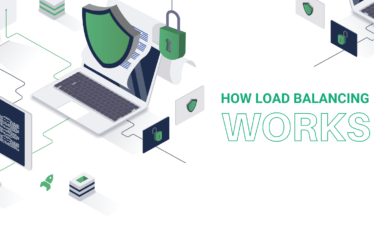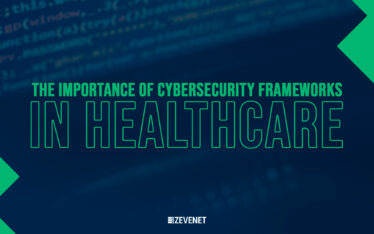
Introduction
The process of achieving and maintaining PCI DSS Compliance is not easy for any organization. Be it a large-scale organization, mid-sized firm, or a small company, PCI DSS can be a daunting task for it comprises a comprehensive set of security requirements. Achieving compliance requires a good understanding of the payment security framework and implementation of the security control requirements. Organizations processing payment card data are expected to meet the PCI DSS 12 requirements to ensure compliance and secure the payment environment. These requirements work as guidelines for organizations to secure their network and infrastructure against cyber threats and data breaches. Elaborating on these requirements we have shared some useful tips to prepare for PCI DSS Compliance Audit.
Understanding PCI DSS Compliance Requirements
PCI DSS Compliance is a security standard and framework enforced by the PCI Security Standard Council that focuses on protecting cardholder data. The standard comprises 12 Requirements outlined by the council that focuses on technical and operational measures for securing sensitive payment cardholder data. Organizations are expected to implement these security measures to achieve and maintain PCI DSS Compliance. So, given below are the 12 requirements that are briefly explained for a better understanding of ways to prepare for PCI DSS Compliance.
PCI DSS Requirement 1: Install & Maintain a Firewall Configuration to Protect Cardholder data
Merchants and Service providers are required to maintain a secure network with the appropriate configuration of firewalls and routers. This is to protect the card data environment and prevent cyber-attacks.
PCI DSS Requirement 2: Do Not Use-Vendor Supplied Defaults for System Passwords and Other Security Parameters
Systems and software come with default passwords and settings. So, to ensure security, it is expected that merchants ensure the hardening of the organization’s systems, network, and devices with strong security passwords and configurations. Additionally, merchants are expected to document system hardening procedures and follow the protocols accordingly.
PCI DSS Requirement 3: Protect Stored Cardholder Data
Merchants and Service Providers are required to implement appropriate measures to protect stored cardholder data. Using techniques of encryption the PAN data should be secured against data breach
PCI DSS Requirement 4: Encrypt Transmission of Cardholder Data across Open or Public Network
Merchants are expected to encrypt cardholder data in transit over a public or open network. Further, they should ensure security policies procedures and processes are in place to enforce the security measures and encryption requirements.
PCI DSS Requirement 5: Use and Update Anti-virus Software or Program
Merchants are expected to keep their systems and applications updated and secured with the installation of the latest anti-virus software on devices and applications. This is to ensure protection against malware and other cyber-attacks.
PCI DSS Requirement 6: Develop and Maintain Secure Systems and Application
Reviewing security implementations and installing security patches to mitigate risks is crucial. Regularly updating these security patches is essential to prevent the potential risk of a hack. Merchants are required to patch all the systems within the card data environment and implement security in all phases of development. Additionally, processes must be in place to discover new vulnerabilities in systems and applications.
PCI DSS Requirement 7: Restrict Access to Cardholder Data by Business Need to Know
Merchants are required to implement strong access controls to limit access to cardholder data. This prevents unauthorized access to sensitive card data and the potential risk of data breach or theft. For this, necessary processes must be established to ensure that the access to cardholder data is restricted based on business need to know.
PCI DSS Requirement 8: Identify & Authenticate Access to System Components
Access to systems and data must be tracked and monitored regularly. Every authorized employee must be assigned a unique ID as a part of strong security control measures. This is to track the activities around accessing systems and data in the card environment to maintain accountability
PCI DSS Requirement 9: Restrict Physical Access to Cardholder Data
Restricting physical access to cardholder data is an essential part of implementing security control measures. This requires the implementation of on-site access controls, monitoring of logs, and having in place necessary security policies and processes. Additionally, merchants are required to secure all devices and systems with physical security measures and maintain backups of all data.
PCI DSS Requirement 10: Track and Monitor All Access to Network Resources and Cardholder Data
PCI DSS requires real-time tracking and motoring of all access points including systems and network that comprises card data. This is to identify and prevent the exploitation of vulnerabilities and threats to the card data environment. For this implantation of the log, management is essential for the regular tracking of activity.
PCI DSS Requirement 11: Regularly Test Security Systems and Process
Regularly performing vulnerability assessments and penetration tests are essential for testing all system processes for vulnerabilities. This is to ensure and maintain a constant level of security within the card data environment. All systems and processes must be tested frequently to ensure data security is maintained all the time.
PCI DSS Requirement 12: Maintain a Policy that Addresses Information Security for All Personnel
Creating and maintaining policies that address information security processes is necessary from the enforcement standpoint. Every employee and third-party vendor should have access to these policies to know their responsibilities better. Further, the information security policy must be reviewed annually to align the merchant’s cyber security program with the requirement of PCI DSS.
Now that we know the technical and operational requirements that need to be implemented for achieving PCI DSS, let us see how organizations can prepare for the PCI DSS Compliance Audit.
Steps to Prepare for PCI DSS Audit
Preparing for the PCI DSS Compliance audit can be really stressful. It requires meticulous rounds of assessment reviews and implementation of processes to ensure the final audit is a success. That said, here are some steps that one may follow to prepare for PCI DSS Audit and to ensure it is a success.
Do Not Assume Being Compliant – PCI DSS Compliance requirements are often updated by the PCI Council. These updates are based on the evolving technology and threat landscape in the industry. With the latest version of PCI DSS 4.0 set to release in Q1 2022, organizations need to be vigilant on the new requirements to be introduced and enforced by the council. Regardless of whether you were earlier PCI DSS compliant, it is only the upcoming audit that will suggest whether or not you continue to remain compliant. The compliance audit is an assessment to verify whether all security measures are implemented and in line with the latest data security requirement. So, assuming you are compliant based on your previous PCI DSS audit could be the reason for your organization being non-compliant in the Upcoming audit.
Compliance Gap Analysis – If your organization is undergoing PCI DSS assessment for the first time, it is very important for you to identify as to where your compliance level is on an “As-is” basis, what your key gaps are and also the investments needed. For this, your organization must continue to conduct a gap analysis against the PCI DSS Compliance requirements immediately. This is to assess and verify shortcomings in the requirements and work towards bridging the gaps in the system. PCI DSS is an ongoing process and requires regular review and update of policies procedures and processes to align the business operations with the security standard and cyber security goals. So conducting a gap analysis and remediating the potential compliance gap is crucial, especially before the final audit to ensure PCI DSS Compliance. Again this is not just from the compliance standpoint but also from the perspective of strengthening the security of systems, networks, and infrastructure.
Address All PCI DSS Requirements – Organizations need to ensure that they have addressed all the 12 requirements outlined in the PCI DSS framework to ensure compliance with the security standard framework. Understanding the requirements and their implications is essential for organizations to implement necessary measures for compliance. All requirements have to be met fully as applicable. Falling short of meeting even one of these requirements can result in an unsuccessful audit and non-compliance to PCI DSS. So, it is mandatory that the 12 requirements are met and all the necessary security measures are implemented within the card data environment of the organization.
Create Network and Data Flow Diagram – Organizations must create and maintain an accurate network diagram to understand the network connectivity across the organisation as well as the flow of card data throughout the organization’s network. This gives an insight into the network and systems of the organization that deal with card data including storing, processing, and transmitting card data. Creating a network diagram with a visual representation of the data flow chart reflecting the process of your organization and flow of sensitive card data helps identify shortcomings in the operations. So, based on such a detailed network diagram, organizations can prioritize security measures across systems, applications, networks, and all access points dealing with card data.
Risk Assessment – Risk Assessment is an essential and integral part of any compliance and cyber security program. It is important that organizations determine and understand the risk exposure they are dealing with. Assessing the risk and classifying the level of risk exposure based on severity is crucial for the business to prioritize its security implementation. For this, organizations must annually conduct a risk assessment to identify critical assets that are exposed to threats and vulnerabilities. Such assessments help organizations take proactive measures to secure their systems network and data against evolving cyber threats. It also helps align their cyber security program with the PCI DSS requirements constantly.
Document Policies & Process – Documents concerning the compliance policies, processes, procedures, and vendor contracts and agreements need to be current and updated from time to time. Maintaining all relevant documents as evidence in the PCI DSS audit is crucial. The documents should comprise all the security measures implemented, procedures, and processes that enforce the implementation of compliance policies established within the organization. Such records clearly show the organization’s efforts towards implementing and maintaining PCI DSS Compliance. PCI DSS audit involves verifying documents related to the procedures, policies, and records relevant to the implementation of policies. So, organizations must ensure all documentation is updated and consistent with the daily operations. It is also important to note that any change in the policies, procedures, or process of operation needs to be documented and updated in the records regularly.
Third-party vendor Compliance – Although organizations outsource the data processing activities to third-party vendors, it is still their responsibility to ensure they are compliant. Merchants need to ensure that the third-party vendors they deal with are aware of their responsibilities and process data in compliance with the PCI DSS requirements. Failure to ensure their compliance may result in data breach and non-compliance to PCI DSS for your organization as well. This will cost the organization a fortune if necessary measures are not implemented to monitor their activity. For these reasons involving third-party vendors and other stakeholders in compliance and cyber security, the program is crucial.
Conduct Internal Assessment – Conducting an internal assessment from time to time is essential to identify gaps in processes and weaknesses in systems. This helps in the remediation process and bridges the gaps in the compliance program. Conducting an annual internal assessment is essential for it makes the final PCI DSS Compliance Audit hassle-free. The organization will stand a better chance at achieving PCI DSS Compliance by conducting such pre-assessments and internal audits before the final one. Organizations will be prepared with necessary documents as evidence and have implemented security measures required to ensure PCI DSS Compliance.
Final Thought
PCI DSS Compliance is inevitable for merchants and service providers in the payment card industry. They need to constantly ensure they meet all the requirements and ensure compliance with the payment security standard and framework at all times. For these reasons, we strongly recommend organizations consider onboarding a professional and experienced compliance consultant and auditor to ensure their compliance program is on track and as per the PCI DSS requirement. Regular internal audits and assessments by an experienced professional reflect your organization’s commitment and efforts to secure card data and environment and reflect their proactive approach and initiative to meet their compliance obligations to protect sensitive data.
THANKS TO:
Narendra Sahoo




